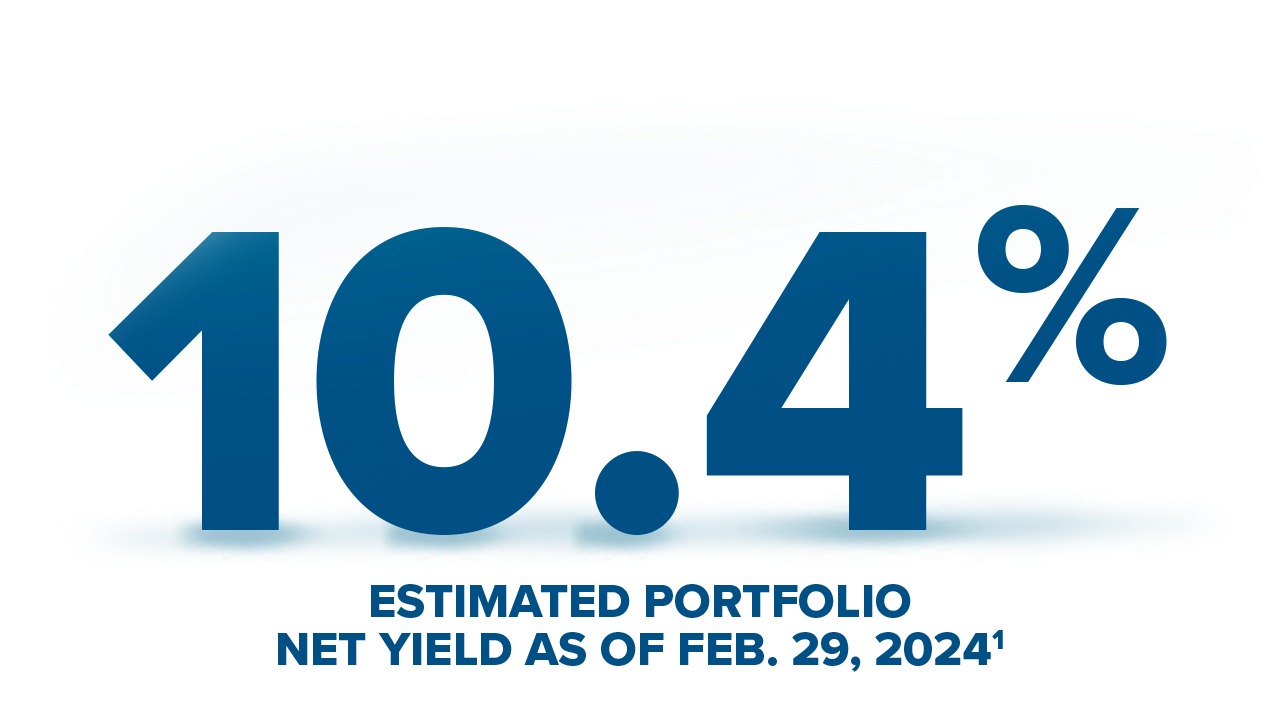Mackenzie Northleaf Private Credit Fund

Mackenzie Northleaf Private Credit Fund
Why invest in this fund?
- Private loans offer strong yield and total return potential and represent a new investment universe for many investors to help better diversify their portfolios.
- Convenient structure delivers private credit exposure with enhanced accessibility and liquidity relative to traditional private credit investments.
- Access to Northleaf Capital Partners, a global private markets investment firm, available to individual accredited investors through Mackenzie.
Key Facts
Portfolio Managers

Felix Wong, MBA, CFA
VP, Portfolio Manager
Investment experience since 1988
Mackenzie Fixed Income Team
Movin Mokbel, MBA, CFA
VP, Portfolio Manager
Investment experience since 1998
Mackenzie Fixed Income Team
Dan Cooper, CFA
SVP, Head of Credit, Portfolio Manager
Investment experience since 1997
Mackenzie Fixed Income Team
Performance
Portfolio
Sustainability Characteristics
Codes & Fees
Historical Data
Resources
Fund Materials
-
The benefits of accessible private credit funds WEBPAGE 166KB
-
Your guide to investing in private credit WEBPAGE 166KB
-
Beyond the numbers: Delivering private credit’s advantages WEBPAGE 166KB
-
Mackenzie Northleaf Private Credit Fund - Request for redemption of units form pdf 217KB
-
Quick reference sheet: Terms and conditions pdf 153KB
-
Mackenzie Northleaf Private Credit Fund - 2024 purchase and redemption schedules pdf 78KB
-
Mackenzie Northleaf Private Credit Fund - 2024 distribution schedule pdf 76KB
-
Subscription Agreement pdf 1258KB
-
Advisor Feature Page - Mackenzie Northleaf Private Credit Fund pdf 334KB
-
Monthly Report – Mackenzie Northleaf Private Credit Fund pdf 352KB
-
Specialty finance: The next frontier of credit investing. pdf 242KB
-
Private Credit - The Mackenzie Northleaf advantage pdf 290KB
-
How to implement the Mackenzie Northleaf Private Credit Fund into a portfolio pdf 640KB
-
Private Credit - An attractive alternative for yield and stability pdf 449KB
-
Quarterly report – Mackenzie Northleaf Private Credit Fund pdf 402KB
Regulatory Documents

Northleaf Capital Partners
The Mackenzie Northleaf Private Credit Fund invests into the Northleaf Senior Private Credit – Levered fund, managed by Northleaf Capital Partners.
Northleaf Capital Partners is a global private markets investment firm with top-tier capabilities across private equity, private credit and private infrastructure. Northleaf has been actively investing third-party capital in the private markets since 2001.
ESG Metric Definition
* - The MSCI ESG Rating for funds is designed to measure the resiliency of portfolios to long-term ESG risks and opportunities. The most highly rated funds consist of issuers with leading or improving management of key ESG risks. The ESG Ratings range from leader (AAA, AA), average (A, BBB, BB) to laggard (B, CCC).
- The Weighted Average Carbon Intensity measures a fund's exposure to carbon intensive companies based on scope 1 and 2 emissions.
- The percentage of fund's market values exposed to companies that generate revenue from sustainable impact solutions goods and services. Additionally, sustainable impact solutions revenue from companies with negative externalities are excluded.
- The fund holdings weighted average of the percentage of board members who are women.
- The percentage of portfolio's market value exposed to companies facing one or more Very Severe controversies related to the environment, customers, human rights, labor rights and governance.
- The percentage of portfolio's market value exposed to companies involved in tobacco. This includes companies that derive more than 10% of revenue from tobacco.
- The percentage of portfolio's market value exposed to companies with ties to cluster munitions, landmines, biological / chemical weapons, depleted uranium weapons, blinding laser weapons, incendiary weapons, and/or non-detectable fragments.
- The percentage of portfolio's market value exposed to companies involved in gambling. This includes companies that derive more than 10% of revenue from gambling activities.
- The percentage of portfolio's market value exposed to companies involved in adult entertainment. This includes companies that generate more than 10% of their revenue from adult entertainment activities.
Each Fund’s ESG characteristics and performance may differ from time to time. Each Fund’s MSCI ESG rating and Morningstar Sustainability Rating does not evaluate the ESG-related investment objectives of, or any ESG strategies used by, the Funds and is not indicative of how well ESG factors are integrated by the Fund. Other providers may also prepare fund-level ESG ratings using their own methodologies, which may differ from the methodologies used by Morningstar or MSCI as applicable. Please refer to the simplified prospectus for the Funds for further information about each Fund’s investment objectives and strategies
MSCI’s ESG Fund Ratings are meant to measure environmental, social and governance (ESG) characteristics of a fund’s constituents. MSCI uses a rating system, ranging from CCC (laggard) to AAA (leader), which considers individual holding scores, ESG momentum and ESG tail risk. The rating is determined based on a weighted average of the company-level ratings of the underlying holdings of the particular fund. These ratings are updated monthly. Under MSCI’s ESG Fund Ratings methodology, a portfolio must meet an eligibility criterion of at least 65% of assets under management covered to have a public rating. See the complete methodology here.
The Morningstar Sustainability Rating is a measure of how well a portfolio, and its holdings, are performing through an ESG issues lens in comparison to its peer group. Higher number of globes indicates that portfolio has lower ESG risks. The rating is determined based on a weighted average of the company-level ratings of the underlying holdings of the particular fund. Ratings are as follows: High = 5 globes, Above Average = 4 globes, Average = 3 globes, Below Average = 2 globes, Low = 1 globe. These ratings are updated monthly. We have reported ratings as of the beginning of January. Under Morningstar’s Sustainability Rating, a portfolio must have at least 67% of assets under management covered to have a public rating. See the complete methodology here.
Weighted Average Carbon Intensity (WACI), a carbon-intensity metric, measures a fund’s exposure to carbon-intensive companies expressed in tonnes of carbon dioxide equivalent (tCO2e) per million dollars US of revenue (USDM). This metric acts as a comparable between the fund and the benchmark, utilizing MSCI’s ESG Fund Ratings methodology Scope 1 and Scope 2 greenhouse gas emissions data. Under our internal methodology, at least 65% of a portfolio’s weight must be eligible and covered in order for the metric to be reported.
Board diversity (women) is demonstrated through company filings; depicted as the percentage of women on a company’s Board of Directors. Company filing is done on an annual basis. Under our internal methodology, at least 65% of a portfolio’s weight must be eligible and covered in order for the metric to be reported.
MSCI ESG Research LLC’s (“MSCI ESG”) Fund Metrics products (the “Information”) provide environmental, social and governance data with respect to underlying securities within more than 23,000 multi-asset class Mutual Funds and ETFs globally. MSCI ESG is a Registered Investment Adviser under the Investment Advisers Act of 1940. MSCI ESG materials have not been submitted to, nor received approval from, the US SEC or any other regulatory body. None of the Information constitutes an offer to buy or sell, or a promotion or recommendation of, any security, financial instrument or product or trading strategy, nor should it be taken as an indication or guarantee of any future performance, analysis, forecast or prediction. None of the Information can be used to determine which securities to buy or sell or when to buy or sell them. The Information is provided “as is” and the user of the Information assumes the entire risk of any use it may make or permit to be made of the Information.
© 2023 Morningstar. All Rights Reserved. The information contained herein: (1) is proprietary to Morningstar and/or its content providers; (2) may not be copied or distributed; and (3) is not warranted to be accurate, complete or timely. Neither Morningstar nor its content providers are responsible for any damages or losses arising from any use of this information. Past performance is no guarantee of future results
